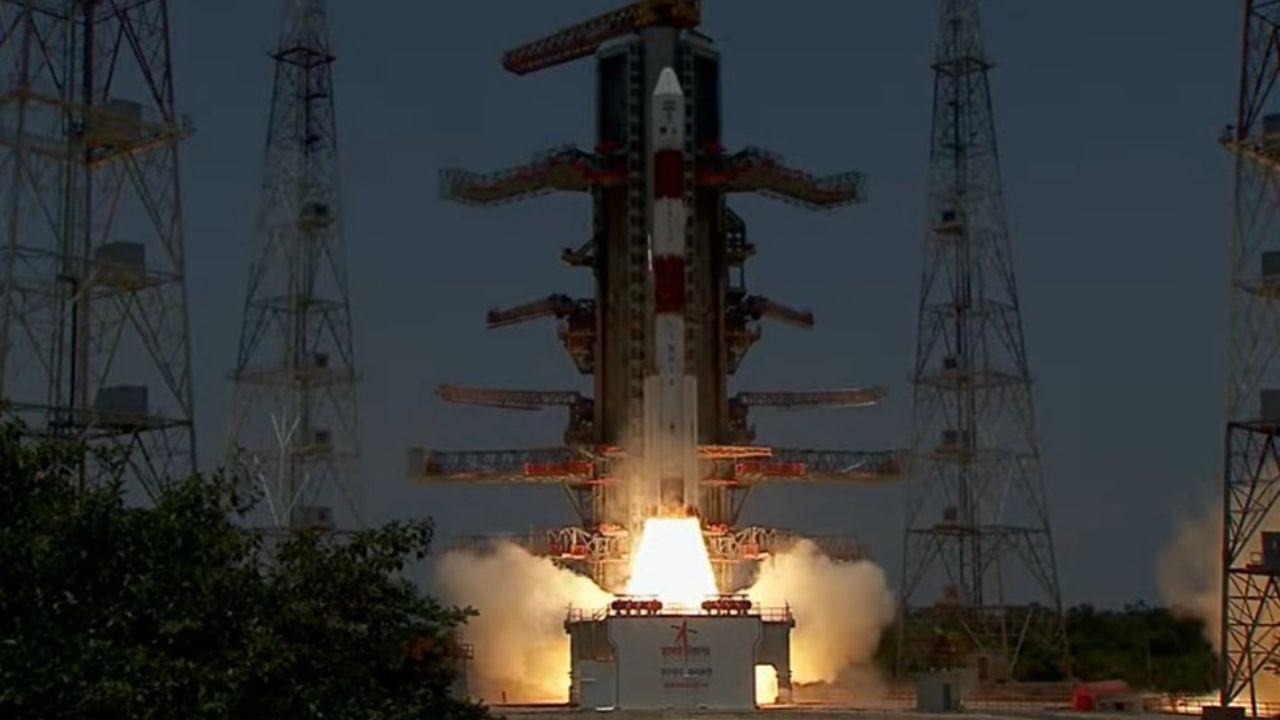According to ISRO, Aditya-L1 is the first space-based observatory to study the Sun. The spacecraft, after travelling about 1.5 million km from the Earth over 125 days, is expected to be placed in a Halo orbit around the Lagrangian point L1 which is considered closest to the Sun

ISRO’s PSLV-C57 carrying ‘Aditya-L1’ spacecraft launched from Satish Dhawan Space Centre, in Sriharikota on Friday. Pic/PTI
ISRO on Saturday launched the country's ambitious Solar mission, Aditya L1 eyeing history again after its successful lunar expedition, Chandrayan 3 a few days ago. As the 23.40-hour countdown concluded, the 44.4-meter-tall Polar Satellite Launch Vehicle (PSLV) soared majestically at the prefixed time of 11.50 am from this spaceport, located on the Eastern coast about 135 km from Chennai. It will be PSLV's "longest flight" for about 63 minutes.
ADVERTISEMENT
According to ISRO, Aditya-L1 is the first space-based observatory to study the Sun. The spacecraft, after travelling about 1.5 million km from the Earth over 125 days, is expected to be placed in a Halo orbit around the Lagrangian point L1 which is considered closest to the Sun. Among others, it will send pictures of the sun for scientific experiments.
#WATCH | Indian Space Research Organisation (ISRO) launches India's first solar mission, #AdityaL1 from Satish Dhawan Space Centre in Sriharikota, Andhra Pradesh.
— ANI (@ANI) September 2, 2023
Aditya L1 is carrying seven different payloads to have a detailed study of the Sun. pic.twitter.com/Eo5bzQi5SO
According to scientists, there are five Lagrangian points (or parking areas) between the Earth and the Sun where a small object tends to stay if put there. The Lagrange Points are named after Italian-French mathematician Joseph-Louis Lagrange for his prize-winning paper -- "Essai sur le Problème des Trois Corps, 1772." These points in space can be used by spacecraft to remain there with reduced fuel consumption.
At a Lagrange point, the gravitational pull of the two large bodies (the Sun and the Earth) equals the necessary centripetal force required for a small object to move with them. After the lift-off at the Satish Dhawan Space Centre in Sriharikota, the scientists would be involved in placing the spacecraft in Low Earth Orbit initially, and later it will be more elliptical.
The spacecraft would be launched towards the Lagrange L1 point using onboard propulsion so that it exits the earth's gravitational Sphere of Influence and cruises towards the L1. Later, it would be injected into a large Halo Orbit around the L1 point near the Sun. The total time from launch to reaching the L1 point would be about four months for the Aditya-L1 Mission, ISRO said.
Explaining the reasons to study the Sun, ISRO said it emits radiation in nearly all wavelengths along with various energetic particles and magnetic fields. The atmosphere of the Earth as well as its magnetic field acts as a protective shield and blocks harmful wavelength radiations. In order to detect such radiation, solar studies are carried out from space.
The major objectives of the mission include understanding the Coronal Heating and Solar Wind Acceleration, the initiation of Coronal Mass Ejection (CME), near-earth space weather and the solar wind distribution.
The Aditya-L1 mission carries seven scientific payloads to carry out the study. The Visible Emission Line Coronagraph (VELC) will study the solar corona and dynamics of CME. VELC, the primary payload will be sending 1,440 images per day to the ground station for analysis on reaching the intended orbit.
It is "the largest and technically most challenging" payload on Aditya-L1.
The Solar Ultraviolet Imaging Telescope would do imaging of the Solar photosphere and Chromosphere in near Ultraviolet and measure the solar irradiance variations.
The Aditya Solar Wind Particle Experiment (ASPEX) and Plasma Analyser Package for Aditya (PAPA) payloads will study the solar wind and energetic ions as well as the energy distribution. The Solar Low Energy X-ray Spectrometer and the High Energy L1 Orbiting X-ray Spectrometer (HEL1OS) will study the X-ray flares from the Sun over a wide X-ray energy range. The Magnetometer payload is capable of measuring interplanetary magnetic fields at the L1 point. The payloads of Aditya-L1 are indigenously developed with the close collaboration of various centres of ISRO.
 Subscribe today by clicking the link and stay updated with the latest news!" Click here!
Subscribe today by clicking the link and stay updated with the latest news!" Click here!







